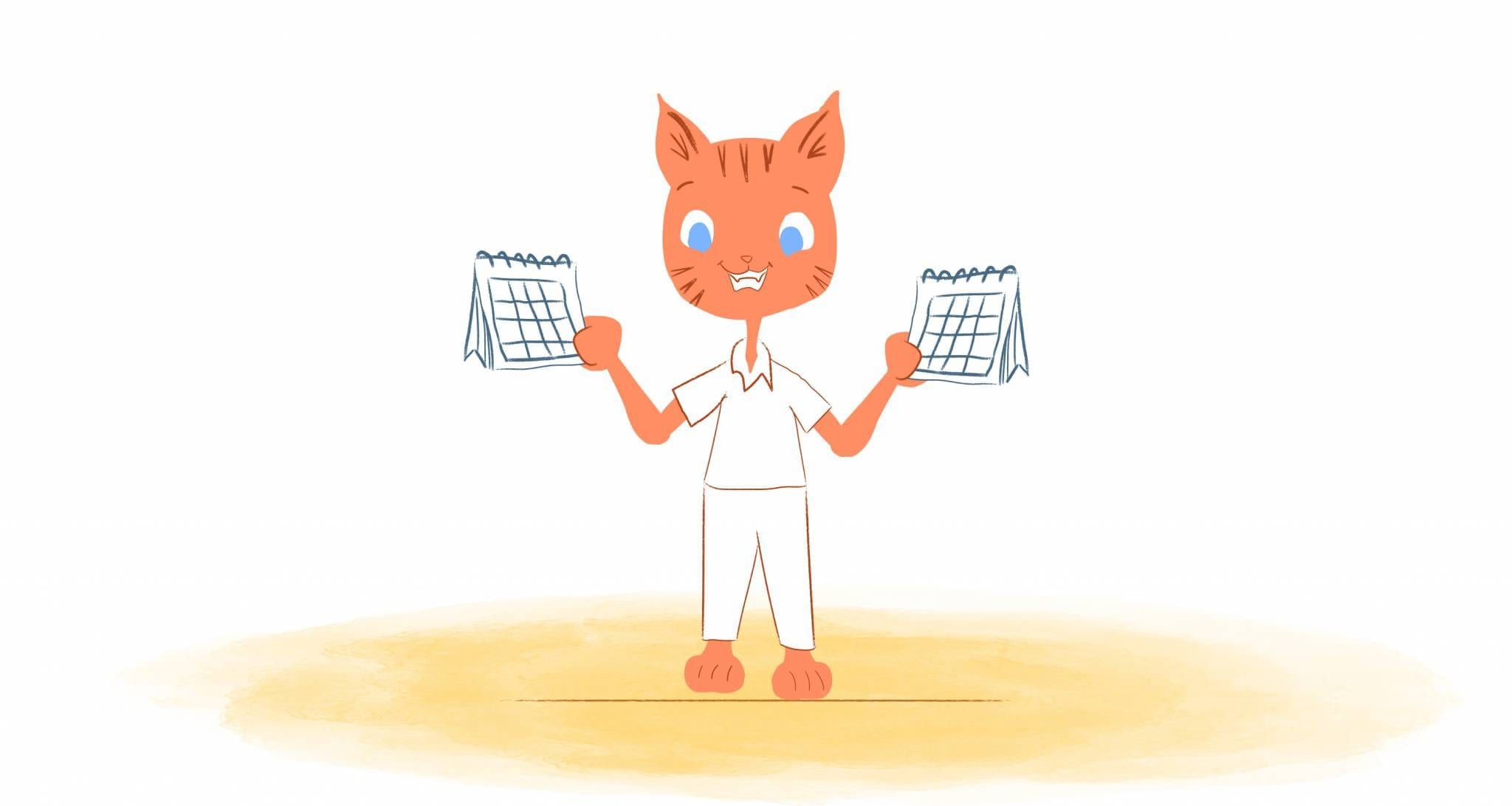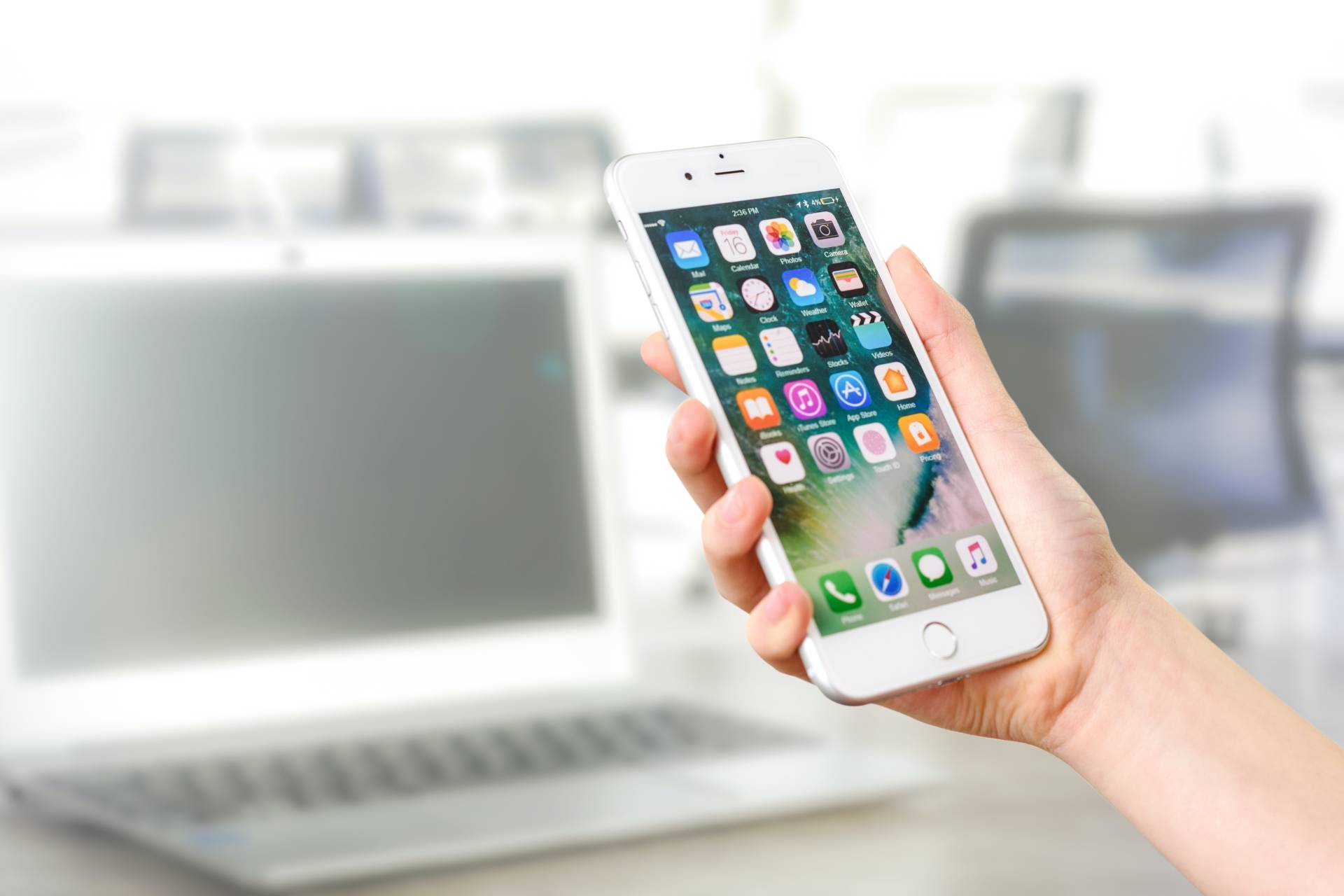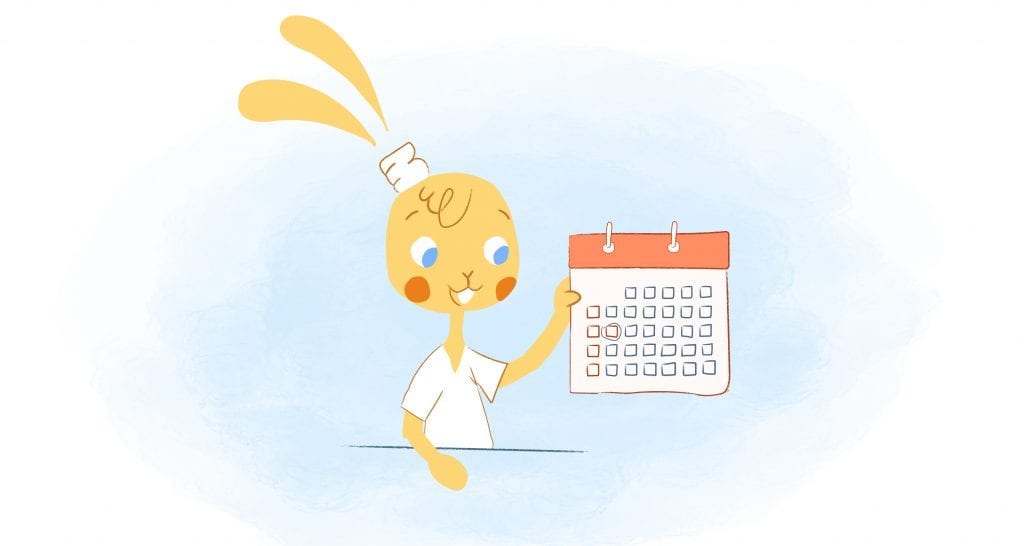

Paper calendars have a long and rich history. In fact, one of the earliest calendars on paper is the Chronography of 354. As early as the fourth century, Furius Dionysius Folocalus was commissioned by Valentinus to draw and write the calendar (as they knew it).
To this day, paper calendars are still used. But, due to the widespread use of online calendars and calendar apps, paper calendars aren’t as popular as they once were. And that’s actually a shame since paper calendars offer the following advantages.
1. Paper calendars have fewer distractions.
People often highlight notifications and reminders as advantages of digital calendars over paper calendars. What’s more, with your phone always by your side, calendar apps can remind you when you need to walk the dog or prepare for an upcoming meeting. Seriously, you can’t beat that kind of convenience.
When it comes to notifications, how many do you receive each day? Well, a typical U.S. smartphone user gets over 46 notifications per day on their device. With that many, are you simply swiping away most of them?
Let’s be real. In this era of popups, dings, and buzzes, app reminders have almost become irrelevant. Since notifications are annoying and distracting in themselves, we have learned to ignore the content of the message.
Additionally, studies have shown that too much screen time adversely impacts the brain, making journaling via phone a convenient, but ineffective option. Besides, have you ever spent hours browsing Instagram, Reddit, or YouTube simply because you got a simple text push notification?
Spending a few minutes planning out your day on paper lets your eyes rest. It also relieves you from the overload of emails and social media feeds we receive on a daily basis.
In short, for journaling, idea mapping, organizing tasks and events, and poetry writing switch to paper calendars or planners. In the long run, you’ll be doing your brain a favor.
2. Everything can be centralized.
The value of apps cannot be overstated. However, they’re very dispersed as well. For example, you might use one app for note-taking, while another might be used for your day-to-day schedule. It won’t take long before you’re switching between programs to stay organized.
That might not seem like a big deal. As psychologist David Meyer points out, though, switching between tasks costs us 40% of our productivity. Additionally, switch costs can result in the following:
- The quality of our work is reduced.
- It affects the amount of information we retain.
- Flow is hindered.
- Decision fatigue.
- Wastes valuable time.
You can actually be less productive if you use too many productivity apps. When you use a paper calendar, you won’t have to worry about that. You can organize everything in one place.
3. Paper leads to greater productivity.
There’s no denying that you work better when there are fewer distractions. In addition, you also work better if there’s a unique focus you bring to the task. As an example, making sure your daily goals are aligned with your priorities and making sure nothing is forgotten boosts productivity.
4. Writing by hand promotes information recall.
The following is probably something you’ve heard before, and it’s true. By writing things down, you are more likely to remember them. However, there’s more to it than that. As well as improving our ability to formulate plans and to-do lists, writing by hand increases focus by stimulating certain brain cells at the base of the brain.
Putting pen to paper activates this sector, causing the brain to turn into maximum focus mode. By writing down a goal, your brain will be working overtime to ensure that you remember and pay attention to it. One study by Dominican University of California found that people who wrote down their goals, shared them with others, and stayed accountable for them were 33% more likely to achieve them than those who just formulated them in their heads.
Consequently, the screen limits that ability, becoming a shield that distances us from our work. When you form and connect the letters by hand, your brain is engaged for a much longer period of time. Typing, however, consists solely of pressing keys to arrange letters. It’s also becoming automatic to type without looking due to muscle memory.
5. Besides short-term goals, you can also keep track of long-term ones.
In addition to keeping track of appointments, some calendars or planners allow long-term planning.
It may be a good idea to plan on running a certain amount of miles six months in the future, for example. Using task-driven entries, you can keep track of your goals and take the necessary steps to reach them.
6. Reduces Stress.
A written plan has far more benefits than simply being more organized. That’s why a world leader in digital technology, Japan, maintains a thriving culture of good old-fashioned paper agendas.
In addition to something similar to the bullet journal concept, the Japanese take time to organize their thoughts through pens and paper, stickers, color coding, and drawing, with many designing their own unique notation systems. It might be easy for a person to keep their mind clear in a fast-paced environment such as Japan.
The link between writing things down by hand and mindfulness has been studied extensively as well. Journaling is often recommended in stress therapy because of its healing qualities. Writing helps you to organize your thoughts and put them into words, like active meditation.
By putting in the effort, you become more selective in your word choice. This helps you to define your feelings, attitudes, and goals more clearly. By registering them, you can deal with them more effectively.
7. Crossing off completed tasks is satisfying.
Crossing off appointments on a physical piece of paper gives you a real sense of accomplishment that isn’t present in apps. By completing a task, you can feel satisfied and motivated to complete the next one. As an alternative, you can use a “bullet journal,” which provides a key for each step in a given project.
However, in order to clean your home, you might include your bathrooms, bedrooms, and attics on your bulleted list. If your tasks are more complex, breaking them up into manageable chunks lets you focus on one at a time and understand how far you’ve come.
“It is a little pat on the back that you did something you set out to do, which sets you up with a positive mindset to move forward and achieve the next thing on your list,” says Kristina Kardous, founder of Plum Paper. “We all need to feel a sense of accomplishment.”
8. Protects your calendar from hacking.
“There’s another great reason you may still want a paper calendar over an online one,” writes Kayla Stone in a previous Calendar article. “Paper calendars can’t be hacked by other people who shouldn’t be accessing them.”
Even so, they could still be viewed by someone who shouldn’t see them. “Yet, unless you are guarding some major secrets, that shouldn’t be a problem for most people,” adds Kayla. “Additionally, if you keep them in a safe location, such as in a locked drawer, it should be fine.”
9. Grows ambition.
Longhand writing helps you be more concise and to the point due to the fact that it requires more effort. Obviously, typing is much faster and easier. But it also makes it more difficult to refine our thoughts to their essence by being selective about what we write.
As such, compare your notes if you’re still debating between paper planners and digital ones. There is a very good chance that the ones in your app look more verbose and cluttered.
The act of writing allows us to clarify our thoughts and mindfully connect with what we want and need to accomplish. The abbreviation of events and certain tasks in your to-do list can help you save time. However, it helps to be more specific when considering your monthly, yearly, and lifetime goals.
Furthermore, Columbia Business School researchers found that users who used paper calendars had more cohesive and detailed plans than those using mobile calendars.
In the end, our thoughts are closely related to our language. You are more likely to stay focused on your goals if you write them down and carefully word them. If you could see it right there – in the planner you open every day – how convenient would that be?
10. Digital fatigue is a growing problem.
Did you know more than 60% of Americans suffer from digital eye strain? Besides being potentially damaging to their eyes for years to come, they can also experience symptoms like:
- Eye strain
- Dry eyes
- Headaches
- Blurred Vision
- Neck and shoulder pain
Thankfully, a paper calendar offers a welcome relief from screens.
11. You can reflect on your activities.
Last but not least, paper calendars allow for reflection. Imagine that you had a particularly hectic two weeks. By taking a quick look at your calendar or planner, you can find out how busy your schedule was and where you might be able to reorganize it.
A digital calendar, however, is often ephemeral. Basically, they are made to notify you rather than to examine your life. Using a paper calendar not only shows you how you’ve been spending your time but also allows you to eliminate activities that have a negative impact on how productive you are.
Image Credit: RODNAE Productions; Thank you!











Deanna Ritchie
Editor-in-Chief at Calendar. Former Editor-in-Chief and writer at Startup Grind. Freelance editor at Entrepreneur.com. Deanna loves to help build startups, and guide them to discover the business value of their online content and social media marketing.